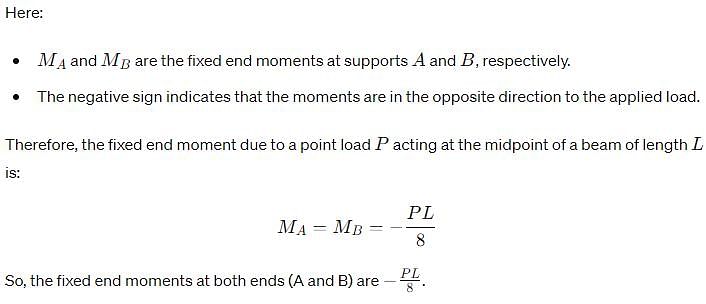APSC AE CE Paper 1 Mock Test - 7 - Civil Engineering (CE) MCQ
30 Questions MCQ Test APSC AE CE Mock Test Series 2024 - APSC AE CE Paper 1 Mock Test - 7
If C, is the allowable rate of change of the centrifugal acceleration then the length of transition curve is given by,
Which of the following is not a retarding admixture?
| 1 Crore+ students have signed up on EduRev. Have you? Download the App |
IRC has specified the maximum value of stripping value of bitumen not be exceeded
Broadly spaced contour lines on a map show that the area is
A crop requires 19 cm of water in 14 days, then the duty of the crop is
Garret diagram, for the design of irrigation channels, is based on
The difference between face left and face right observation of theodolite is 3’. The error is -
Tension bars in a cantilever beam must be enclosed in the support up to:
A circular shaft can transmit a torque of 5kNm. If the torque is reduced to 4kNm, then the maximum value of bending moment that can be applied to the shaft is-
Calculate the volume (cubic meter) of earthwork for an embankment of length 30 m and width 4 m. The mean depth of the embankment is 4 m and side slope is 2: 1. Using mid-sectional area method.
For the stiffness criteria of a simply supported beam the ratio of its span to depth shall not exceed:
Along the horizontal curves, if centrifugal force exceeds lateral friction, vehicles may
In a pipe when the valve is closed suddenly, then due to high pressure
The relation between E (Modulus of elasticity) and G (Shear modulus) is given by:
Sewage treatment units are normally designed for:
Fixed end moment due to a point load P acting at the midpoint of the beam having length L is:
The velocity at which laminar flow withdrawn is:
If the thickness of the thinnest outside plate is 20 mm, then the maximum pitch of rivets in tension will be taken as -
If the discharge for different crops is 0.6 cumecs in the field and the capacity factor and time factors are 0.9 and 0.7, respectively, then what is the design discharge of the distributary at its head?
Maximum spacing of longitudinal bars measured along the periphery the RC column shall not exceed
According to IS : the permissible stress in axial tension in steel is (fy=minimum yield stress of steel)
The drag force exerted by a fluid on a body immersed in the fluid is due to-
The length of the straight portion of a bar beyond the end of the hook should be at least-
The Shape of the recession limbs of a hydro-graph depends on
Which of the following represents Darcy’s friction factor in terms of Reynolds number (Re) for the laminar flow in circular pipes?






 foe spans upto 10 m.
foe spans upto 10 m.




















